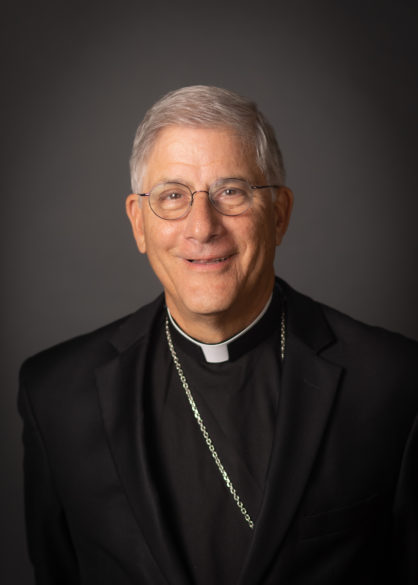By Bishop Joseph R. Kopacz, D.D.
At the heart of the Ordinary Jubilee of Hope, although somewhat in the background, is the Papal Encyclical, Dilexit Nos that Pope Francis released in October of last year. Literally, the title declares, He Loved Us and throughout the document the Holy Father unfolds the truth and beauty of the Sacred Heart of Jesus. This is the third of the pope’s Encyclicals since his Papal Inauguration on March 19, 2013, the Solemnity of Saint Joseph. In June 2015 he presented to the Church and to the world his ground-breaking achievement, Laudato Si, in praise of God’s creation and, in turn, our responsibility as good stewards for the earth, our common home. In the throes of the pandemic in 2020 he published his second social encyclical, Fratelli Tutti which was a clarion call to the world and to the church for a deeper commitment to peace, justice and unity among nations and peoples, and within the Body of Christ. Nearly five years later in anticipation of the Jubilee Year of Hope, Dilexit Nos returns us to the foot of the Cross, the wellspring of all that is holy and good in our world, and the ground of our hope.

In the early stages of the Pope’s Bull of Indiction for the Jubilee Year, Spes non Confundit, Hope does not Disappoint, Pope Francis makes clear the unbreakable bond between the theological virtue of Hope and the Sacred Heart of Jesus. “Hope is born of love and based on the love springing from the pierced heart of Jesus upon the Cross.” (#3)
Therefore, because of this undying love, with Saint Paul we stand upon the conviction that “nothing or no one can separate us from the love of Christ.” (Romans 8,35) In Dilexit Nos with ample room to unfold the wisdom of the ages the pope presents the great love of the well-known saints and countless others in each generation for the Sacred Heart of Jesus. In the same vein he clarifies that this love for the Sacred Heart is not primarily a devotion because the sacred heart represents our saving Lord in whom we believe, hope, and love because he loved us first.
The following are the testimonies of some of the remarkable saints over the centuries. In the 12th century Bernard of Clairvaux takes up the symbolism of the pierced side of the Lord and understands it explicitly as a revelation and outpouring of all the love of Jesus’ heart. “A lance passes through his soul even to the region of his heart. No longer is he unable to take pity on my weakness. The wounds inflicted on his body have disclosed to us the secrets of his heart; they enable us to contemplate the great mystery of his compassion.” Saint Therese of the Child Jesus , the Little Flower at 15 spoke of Jesus as the one “whose heart beats in unison with my own…You know that I myself do not see the Sacred Heart as everyone else. I think that the heart of my spouse is mine alone, just as mine is his alone, and I speak to him in the solitude of this heart to heart, while waiting to contemplate him face to face.”
Saint John Henry Newman, the great intellectual of the 19th century took as his motto the phrase Cor ad cor loquitur, since, beyond all our thoughts and ideas, the Lord saves us by speaking to our hearts with his Sacred Heart. It was in the Eucharist that Newman encountered the living heart of Jesus, capable of setting us free. “O most Sacred, most loving Heart of Jesus, Thou are concealed in the Holy Eucharist, and Thou beatest for us still.”
Finally, more than anyone, the Blessed Mother teaches us how to live with the heart of her Son. “He went down with them and came to Nazareth, and was obedient to them, and his mother kept all these things in her heart. (Luke 2, 51) Beyond devotion, with Mary the love of her Son inspires us to live, to serve, and to care with his mind and heart.
At the end of Dilexit Nos Pope Francis expresses the unbreakable bond among his three Apostolic Encyclicals. “The present document can help us see that the teaching of the social Encyclicals Laudato Si’ and Fratelli Tutti is not unrelated to our encounter with the love of Jesus Christ. For it is by drinking of that same love that we become capable of forging bonds of fraternity, of recognizing the dignity of each human being, and of working together to care for our common home. In a world where everything is bought and sold, people’s sense of their worth appears increasingly to depend on what they can accumulate with the power of money. Christ’s love can give a heart to our world and revive love wherever we think that the ability to love has been definitively lost.”
This is the hope of the Holy Father and our hope.


